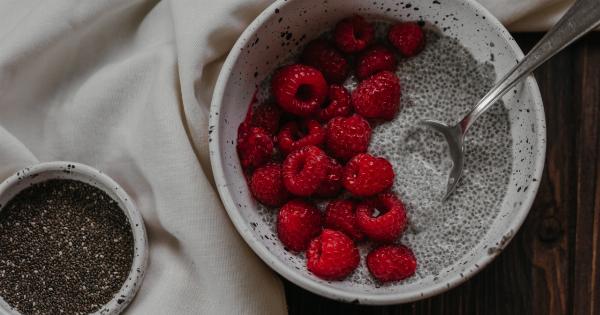Watermelon, with its refreshing and juicy flesh, is a popular summer fruit that not only quenches your thirst but also provides a host of health benefits.
Packed with essential nutrients and hydrating properties, watermelon offers a perfect combination for maintaining optimal health. However, not all watermelons are created equal, and knowing how to choose the healthiest one can make a significant difference in terms of taste and nutritional value.
In this article, we will guide you on how to select a ripe and nutritious watermelon and ways to maximize its nutritional benefits.
How to Pick the Perfect Watermelon
When it comes to finding the healthiest watermelon, it’s essential to consider various factors such as appearance, weight, sound, and texture. Here are some tips to help you pick the perfect watermelon:.
1. Look for a Symmetrical Shape
The first step to selecting a healthy watermelon is to examine its shape. Choose a watermelon that is symmetrical, which indicates that it received consistent sun exposure while growing.
An irregular shape may suggest uneven ripening or insufficient sunlight, affecting its taste and quality.
2. Check for a Uniform Color
The color of the watermelon’s skin is another crucial aspect to consider. Look for a watermelon with a deep green or dark green skin as it indicates ripeness. Avoid watermelons with a pale or light green shade, as they may not be fully ripe.
Additionally, a ripe watermelon may have a dull skin, rather than a shiny appearance.
3. Examine the Rind
Inspect the watermelon’s rind for any blemishes, bruises, or cuts. A healthy watermelon should have a smooth and intact rind. Any visible damage may suggest spoilage or improper storage.
Additionally, ensure that the rind doesn’t have any soft spots or dents, as these can indicate an overripe or damaged watermelon.
4. Tap for a Hollow Sound
One of the most reliable ways to determine the ripeness of a watermelon is by tapping on its surface. Gently tap the watermelon with your palm and listen for a hollow sound.
A ripe watermelon will produce a deep and resonant sound, indicating its juiciness and quality. If you hear a dull or thud-like sound, it may indicate that the watermelon is underripe or overripe.
5. Check the Weight
A heavy watermelon often indicates juiciness and ripeness. When comparing different watermelons, choose the one that feels heavier for its size.
The weight is an excellent indicator of the fruit’s water content, as a lighter watermelon may lack the desired juiciness and flavor.
6. Look for a Yellow Spot
Another useful tip is to find the watermelon’s “belly.” This refers to the spot where the watermelon rested on the ground while growing. A ripe watermelon typically develops a creamy yellow or even orange spot on its underside.
This yellow spot suggests ripeness and sweetness, as it indicates the watermelon had sufficient time to mature and develop its flavor.
7. Consider Seedless or Seeded
Decide whether you prefer a seedless or seeded watermelon. Seedless varieties are typically easier to consume and convenient for snacking. However, keep in mind that seeded watermelons often have better flavor and nutritional value.
8. Organic vs. Conventional
Choosing between organic and conventional watermelons is a personal preference. Organic watermelons are grown without the use of synthetic fertilizers or pesticides, making them a healthier choice for those concerned about chemical exposure.
However, both organic and conventional watermelons can provide nutritional benefits as long as they are ripe and well-selected.
Ways to Maximize Watermelon’s Nutritional Value
Now that you’ve learned how to choose a healthy watermelon, let’s explore some techniques to make the most of its nutritional value:.
1. Optimal Storage
After purchasing a ripe watermelon, it’s crucial to store it properly to preserve its freshness and nutritional value. Keep the watermelon at room temperature if you plan to consume it within a few days.
However, if you want to extend its shelf life, store it in the refrigerator. Cut watermelon should be placed in an airtight container to avoid cross-contamination and maintain its juiciness.
2. Enjoy it Fresh
While there are numerous ways to incorporate watermelon into recipes, enjoying it fresh is the best way to maximize its nutritional benefits. Watermelon is a rich source of vitamins A, B, and C, as well as hydrating electrolytes and antioxidants.
To enjoy its refreshing flavor and full range of nutrients, savor it as is, sliced or cubed.
3. Experiment with Recipes
If you’re craving some variety, watermelon can be a versatile ingredient in various recipes. From watermelon smoothies to salads, popsicles, and even grilled watermelon, there are numerous ways to get creative and enjoy this nutritious fruit.
4. Combine with Other Nutrient-Rich Foods
Enhance the nutritional value of your watermelon by combining it with other nutrient-rich foods. Pair it with fresh mint leaves, feta cheese, or lime juice for a refreshing salad.
You can also blend watermelon with other fruits to create a vibrant and nutritious fruit salad.
5. Make Infused Water
Infused water is a fantastic way to enjoy the flavors of watermelon. Slice some watermelon and add it to a pitcher of water along with other fruits, such as cucumber, lemon, or berries.
Allow it to infuse for a few hours in the refrigerator, and enjoy a refreshing and hydrating drink.
Conclusion
Choosing the healthiest watermelon involves considering factors like shape, color, weight, sound, and texture. By following these tips, you can select a perfectly ripe, delicious, and nutritious watermelon.
Remember to store it properly and explore various ways to enjoy its fresh flavor and maximize its nutritional value. Incorporating watermelon into your diet is an excellent way to stay hydrated, boost immunity, and promote overall well-being during the summer months.






























